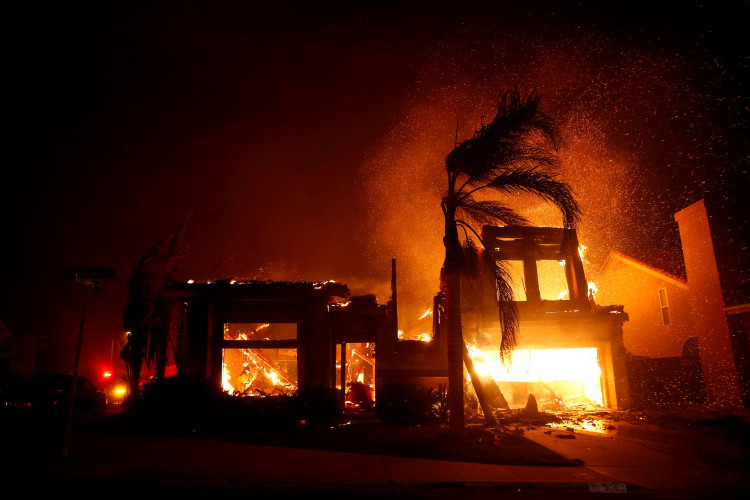The wildfires - Camp Fire, Woolsey Fire, and Hill Fire - battling Northern and Southern California are expected to slash multi-billion-dollar worth of payout from the insurance industry
Camp Fire, which now is said to be the most destructive fire in the history of California, is estimated to incur insured losses of about $2 billion to $4 billion since it already burnt down about 110,000 acres and 6,700 structures in Northern California, according to Morgan Stanley. This figure is expected to swell bigger if total economic losses will be taken accounted for.
Camp Fire wreaked havoc in Paradise where a low-income retirement community was located. The people in the region usually work at small local businesses, family-owned restaurants, and auto body shops. The New York Times reported that the median value of a house in Paradise is at around $250,000 while the larger areas of California have a house median at $544,000.
Woolsey Fire, on the other hand, burnt houses of the most affluent in the state. The fire took the homes of some famous celebrities which included Miley Cyrus, Neil Young, Robin Thicke, and Gerard Butler.
Morgan Stanley's estimate of the possible insurance loss amounting between $2 billion and $4 billion was based on the mean property value of about $200,000, including the number of insured properties in Paradise and fire losses coverage in standard homeowners policies.
Morgan Stanley also based its estimates on insured losses incurred during the 2015 Valley Fire amounting to $1 billion. The 2015 Valley Fire burnt about 2,000 structures. The firm also compared its forecast with the 2017 Tubbs Fire which caused as much as $8 billion in insured losses, destroying 5,636 structures in a location where the median home price was at about $600,000.
The most likely insurance companies to bear the brunt of the Camp Fire include Allstate, Travellers, Chubb, and HIG which covers commercial property insurance, Morgan Stanley said.
The firm is also predicting that overall economic impact of the three wildfires would be higher than average and will be felt at the fourth quarter of 2018. This was made worse as the economy is still recovering from the estimated $10 billion industry losses from the Hurricane Michael.
Morgan Stanley, therefore, suggested for the insurance industry to devise policies by considering the risk of natural fire hazards.
Meanwhile, Aon Impact Forecasting Cat Alert estimated that the California fires would damage both insured and uninsured properties, totaling to about multi-billion-dollar. The disaster has destroyed infrastructure, electrical grid, agriculture, and forestry.
In comparison, wildfires have cost the insurance industry more than $9 billion since 1990. The 2017 wildfires in the United States cost about $16 billion in insurance payments.





